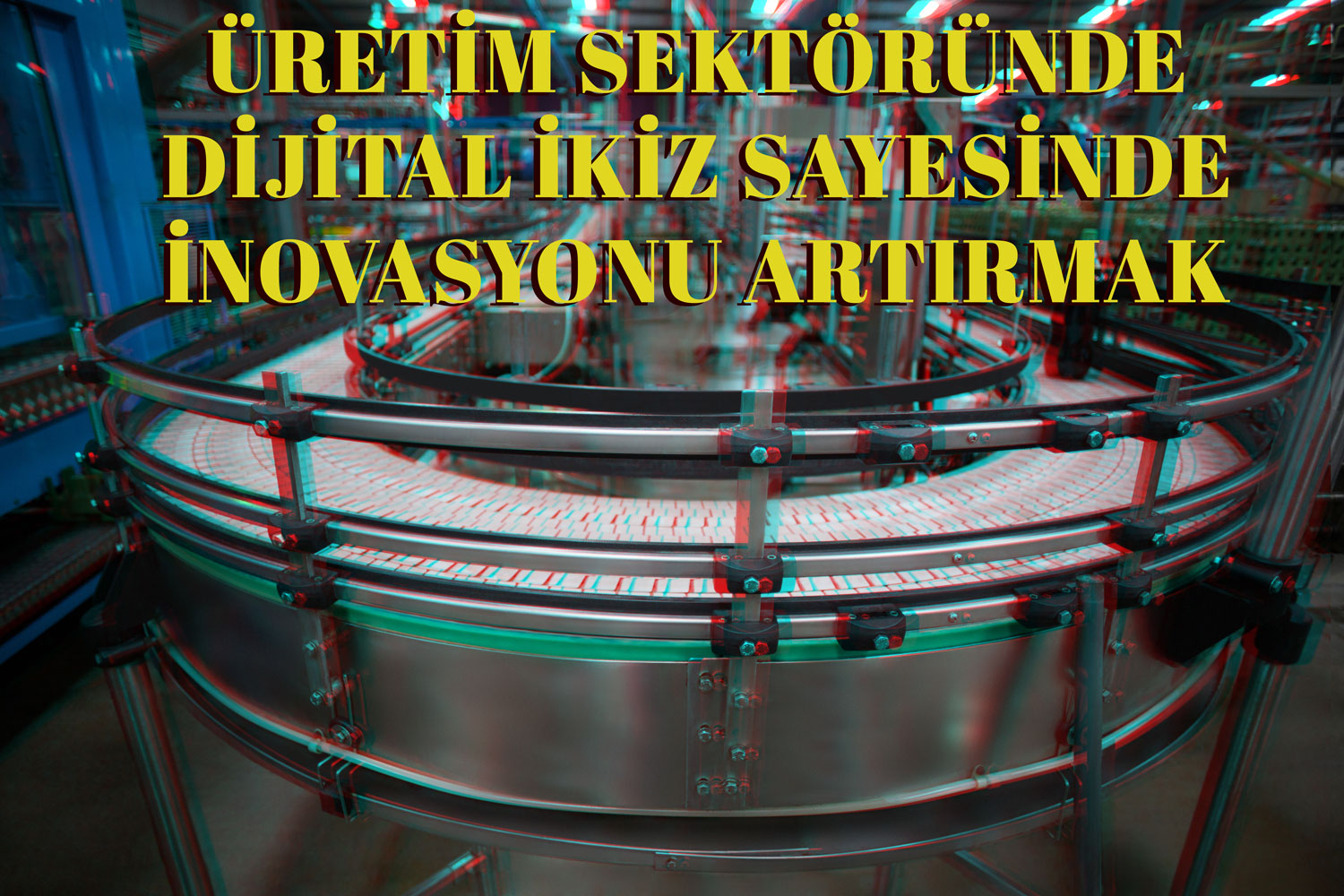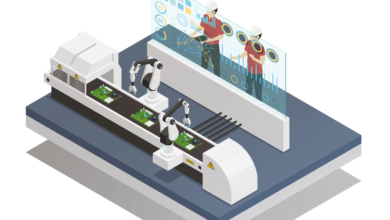Increasing Innovation with Digital Twins in the Manufacturing Sector

The popularity of digital twin technology has surged in proportion to its expanded role in manufacturing and supply chain over the past few years. Gartner’s 2020 “Application Strategies and Solutions Summit” highlighted the challenges manufacturers face in a world where accountability continues to be demanded in the manufacturing sector. Among the discussed challenges were increasing revenue growth and making existing production processes more agile. There was also a need to extract more value from data collected from the manufacturing floor. The conference emphasized the Digital Twin project as a powerful tool to address the complex problems that the manufacturing sector faces today and is expected to face in the future.
So, What Is a Digital Twin?
Digital Twins are literal reflections of physical processes and flows. With a digital twin project, a cyber-physical environment can be created by enabling data transfer from the workshop to model physical production processes. The virtual environment is modeled by feeding from established IIoT (Industrial Internet of Things) hardware and systems to obtain data from manufacturing processes.
The power of this technology is increasingly being applied in manufacturing: trains, turbines, or aircraft engines can be virtually designed and tested to maximize their longevity and reliability without requiring upfront actual production investment.
Digital twins are already optimizing machines and maintenance systems. In addition to optimization, digital twin technology can be combined with other technologies such as the Internet of Things or artificial intelligence. This allows manufacturers to predict different outcomes and avoid potential faults based on data, saving time and reducing costs in many areas.
You can watch our video for real-life examples of digital twins.
One example of a digital twin among our digital twin examples is an excellent environment to answer “what if” questions and evaluate various scenarios, including:
Applications of Digital Twins
Production teams dealing with the challenges of fluctuating market demand must understand the impact of such fluctuations on production schedules, master production plans, and existing inventory.
Manufacturers can answer “what if” questions, such as “how does adding more equipment improve efficiency?” They can even provide an analysis of how production schedules can be optimized to meet forecasted demand.
Capacity Planning and Production Optimization with Digital Twin Programs
One of the uses of digital twins is to provide information at the facility level. With a digital twin, whether newly established or existing, it is possible to optimize all production facilities and conduct detailed improvement analyses. Optimized capacity utilization plans allow manufacturers to improve product quality, increase productivity levels, and increase customer satisfaction rates.
75% of manufacturers include digital twins in their decision-making processes because the Digital Twin project helps optimize production processes and assist businesses in capacity and inventory planning functions.
Process Improvement with Digital Twin Programs
A sensor capturing the digital footprint of a production line and ERP data can comprehensively analyze important KPIs such as production rates and scrap numbers. This helps identify the root causes of inefficiencies and production losses, thereby optimizing efficiency and reducing waste. Taking this a step further, rich, integrated historical data on equipment, processes, and environments can enable predictive maintenance to improve production planning.
Process Design and Virtual Prototyping with Digital Twin Programs
Virtual models of products in use provide comprehensive information about usage patterns, failure points, workload capacities, resulting defects, etc. By better understanding a product’s characteristics and failure modes, designers and developers can accurately assess product usability and improve future component design. Similarly, OEMs can offer customized offerings for different customer groups based on specific usage behaviors and product application contexts. Digital twin technology also helps develop virtual prototypes and run powerful simulations for feature testing based on experimental data.
MICROSOFT HIGHLIGHTS SIMIO SOFTWARE AS A DIGITAL TWIN SOLUTION TO OPTIMIZE MANUFACTURING PROCESSES
Microsoft; partnered with Simio to highlight the benefits of the digital twin program and the innovative features of digital twin technologies and the potential for multi-user collaboration supporting agile planning in an e-book titled “Enhance Innovation and Agility with Digital Twins.” In this e-book, the application of Simio Software to develop a digital twin project that improves efficiency and reduces operating costs is discussed. The case study focused on a large-scale original equipment manufacturer (OEM) producing heavy electrical equipment using robots and automation-based production systems.
Challenges:
OEMs struggled to plan complex manufacturing processes, improve material and resource utilization, and simultaneously reduce production costs. Multistage manufacturing operations become a challenging environment to create optimized master production plans when combined with fluctuating demand.
Implementing a Digital Twin Program
OEMs wanted to create a digital twin to solve operational challenges. A manufacturer preferring Simio software created a digital twin instance of the entire production process to evaluate the impact of constraints such as increased customer demand and material availability on the production system.
The digital twin project consisted of three main steps: modeling the assets and process flows in the digital environment, collecting and integrating data from sensors on the factory floor and from the SAP system, and setting up a planning algorithm to optimize production flow.
Conclusion:
In the period devoted to data collection and application of Simio Digital Twin technology, the OEM witnessed continuous improvements in production processes. The result was an optimized production schedule and master production plan. This resulted in significant return on investment and shortened time to market for the OEM.
The digital twin enabled the OEM to automatically plan the factory and analyze production constraints affecting operational processes at the facility. The manufacturer was able to offer competitive bids to customers easily and securely around cost and time schedules.
The visualization features provided by Simio software allowed end-to-end visibility of all operations from the beginning of the production process to product delivery to the customer.





